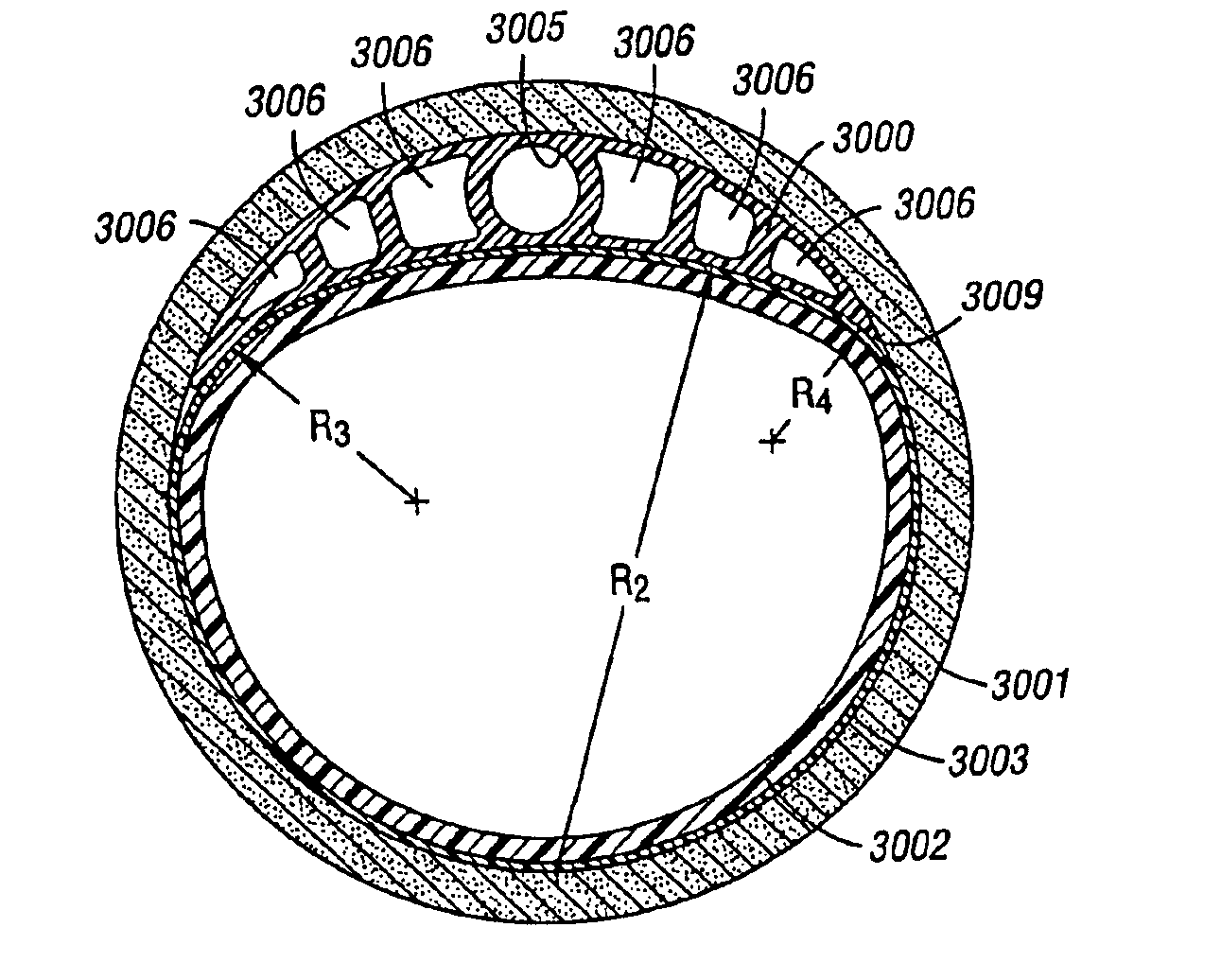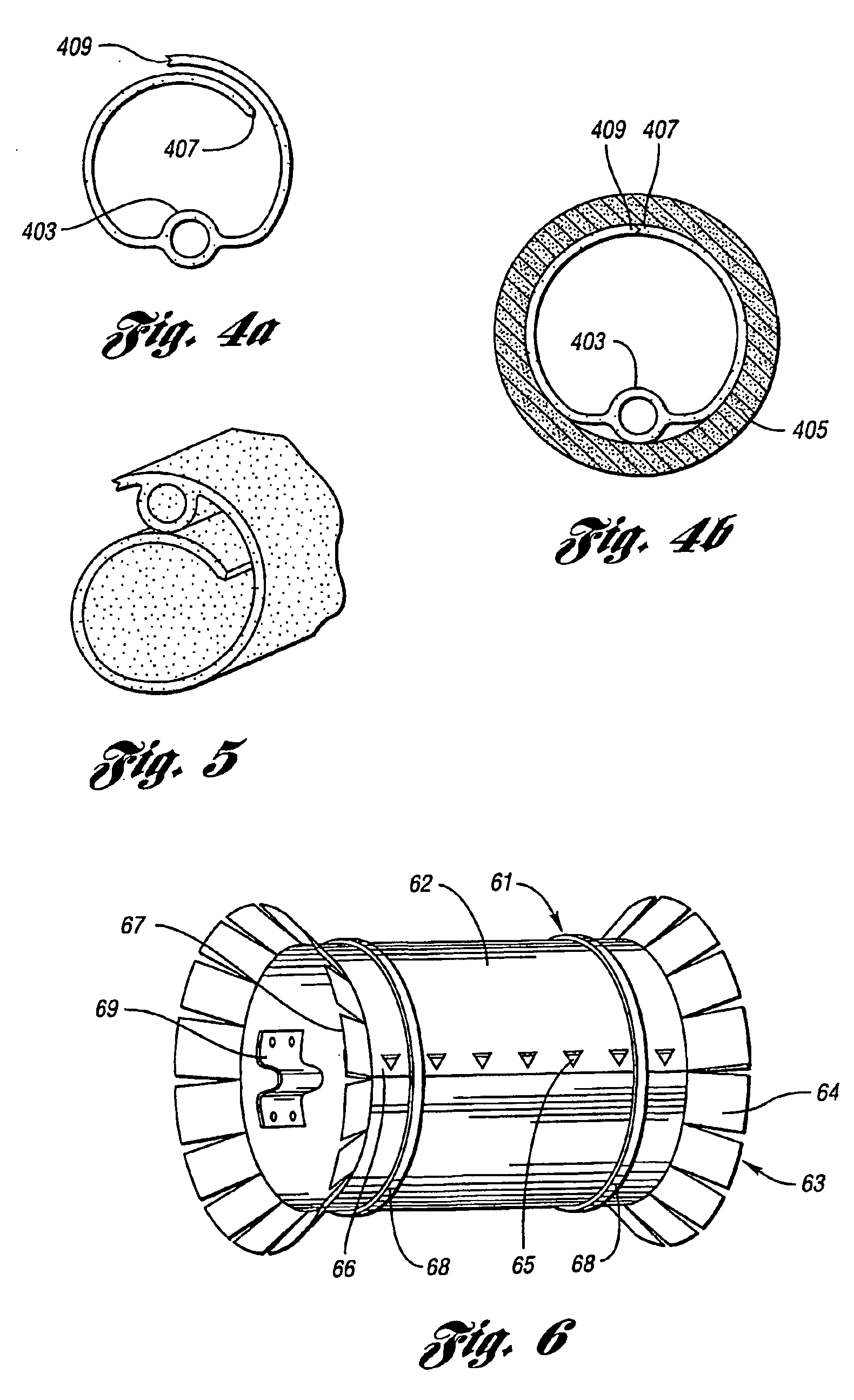Method and apparatus for routing cable in existing pipelines
a technology for routing cables and existing pipelines, applied in mechanical devices, underground pipes, sewer pipes, etc., can solve the problems of difficult cable routing, exceptionally expensive underground routing, and general inapplicability of boring machines
- Summary
- Abstract
- Description
- Claims
- Application Information
AI Technical Summary
Benefits of technology
Problems solved by technology
Method used
Image
Examples
Embodiment Construction
[0036]In the specification which follows, the term “cable structure” may be used to denote either a “cable” per se or a conduit for containing one or more “cables.” Individual “cable” types may be denoted as “wire cables” or “optical cables” as necessity dictates. The types of wire cables and optical cables which may be routed employing the present invention are not limited. These may be electrical supply cables, i.e. for direct or alternating voltage for supply to households, businesses, machinery, etc., i.e. single, two, or multiple phase alternating current of any voltage, generally 110 v to 440 v; low voltage wiring, especially for control devices, for example 24 volt alternating or direct current.
[0037]Preferably, however, the “wire” cables are telecommunications cables such as those customarily used in the telecommunications industry. These may be of the coaxial type, single strands, sheathed cables containing a multiplicity of individual insulated strands or twisted pairs, et...
PUM
 Login to View More
Login to View More Abstract
Description
Claims
Application Information
 Login to View More
Login to View More - R&D
- Intellectual Property
- Life Sciences
- Materials
- Tech Scout
- Unparalleled Data Quality
- Higher Quality Content
- 60% Fewer Hallucinations
Browse by: Latest US Patents, China's latest patents, Technical Efficacy Thesaurus, Application Domain, Technology Topic, Popular Technical Reports.
© 2025 PatSnap. All rights reserved.Legal|Privacy policy|Modern Slavery Act Transparency Statement|Sitemap|About US| Contact US: help@patsnap.com



